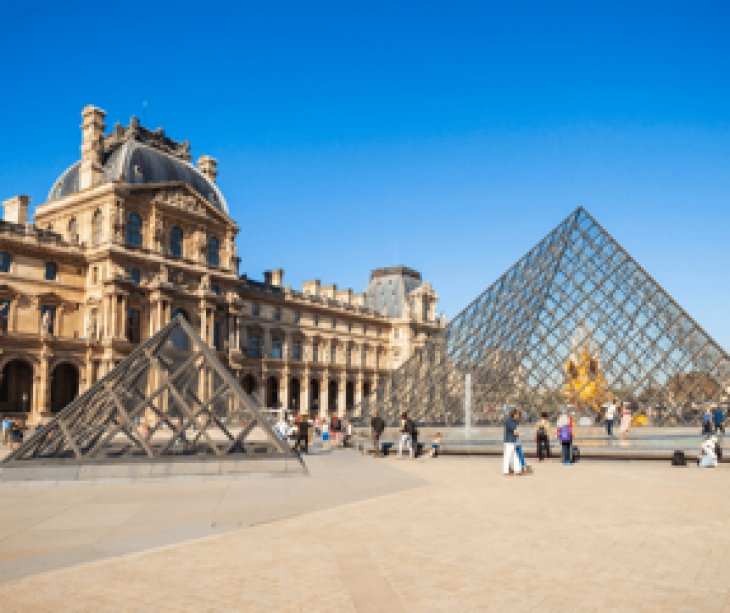
By Publisher Ray Carmen
In a crime straight out of a cinematic thriller, the world awoke this week to shocking news from Paris: priceless jewels have been stolen from the Louvre Museum — the world’s largest and most revered temple of art and history.
A Daring Morning Raid

At precisely 9:30 a.m. on 19 October 2025, a small, highly organised gang struck the Galerie d’Apollon, the jewel-lined heart of the Louvre. Using a basket lift crane, they scaled the façade of the museum, slipped through a window, and smashed their way into display cases containing the French Crown Jewels — relics of emperors and empresses, symbols of France’s royal glory.
In less than eight minutes, the thieves vanished with eight historic pieces, including treasures once belonging to Empress Eugénie, Empress Marie-Louise, Queen Marie-Amélie, and Queen Hortense.
By the time security arrived, the cases were shattered, alarms blaring — and the gallery stood stripped of its regal sparkle.
Officials later confirmed the estimated loss at €88 million (US $102 million), though curators and historians insist the true damage cannot be measured in money. “You can replace gold,” one conservator said, “but not history.”
One jewel — Empress Eugénie’s crown — was later found, dropped and damaged during the thieves’ escape, a tragic symbol of royal beauty now bruised by modern greed.
The Anatomy of a Perfect Heist
Investigators say the operation was precisely choreographed. A team of four professionals executed the theft with military precision — timing, speed, and escape all perfected.
They entered through the upper window, shattered security glass, seized the jewels, and fled through side exits, escaping on scooters and motorbikes into the Paris dawn.
The museum, shaken and stunned, closed immediately. Days later, while the Louvre reopened to the public, the legendary Galerie d’Apollon remained sealed — now transformed from a gallery of light to a crime scene under floodlights and forensic dust.
A Cultural Earthquake
This was no ordinary robbery. It was a wound to civilisation.
The stolen jewels — delicate tiaras, brooches, and diadems — represent centuries of royal lineage, love stories, and craftsmanship. Each gem told a story of empire, artistry, and the passage of power from monarch to museum.
For France, the heist feels deeply personal — a national humiliation, echoing the ghosts of royal courts long gone.
For the world, it reignites the eternal question: how safe are humanity’s treasures, even behind the Louvre’s marble walls?
Security experts are now scrutinising vulnerabilities in major institutions across Europe, warning that even the mightiest museums are not impervious to modern ingenuity and audacity.
The Hunt for History
The French anti-heritage crime unit has mobilised over 100 investigators. The stolen works have been placed on INTERPOL’s Stolen Art Database, alerting customs agencies and auction houses worldwide.
Authorities suspect an international art-crime network — the kind that dismantles or melts down pieces before they can ever be traced. Experts fear that if the jewels are altered, their historical identity may be lost forever.
Meanwhile, inside the Louvre, forensic teams continue their painstaking work — dusting, cataloguing, analysing every fragment of broken glass and every fibre of fabric left behind.
Unanswered Questions
Who planned the heist? Who financed it? And who dares to traffic objects of such renown that they can never be displayed in public again?
The Louvre has promised a full security review in partnership with the French Ministry of Culture, even as the museum’s director calls the theft “an act against the soul of civilisation.”
A Final Reflection
As investigators scour Paris and beyond, one truth remains unshaken: art, like love, can never be entirely possessed.
The jewels of the Louvre may glitter again someday — restored, recovered, or remembered — but their brief disappearance reminds us of the fragility of beauty itself.
From the grandeur of Napoleon’s empire to the audacity of a modern heist, the line between history and legend grows ever thinner.
And somewhere in the shadows of Paris, the stolen sparkle of France still flickers — silent, secret, and priceless.




